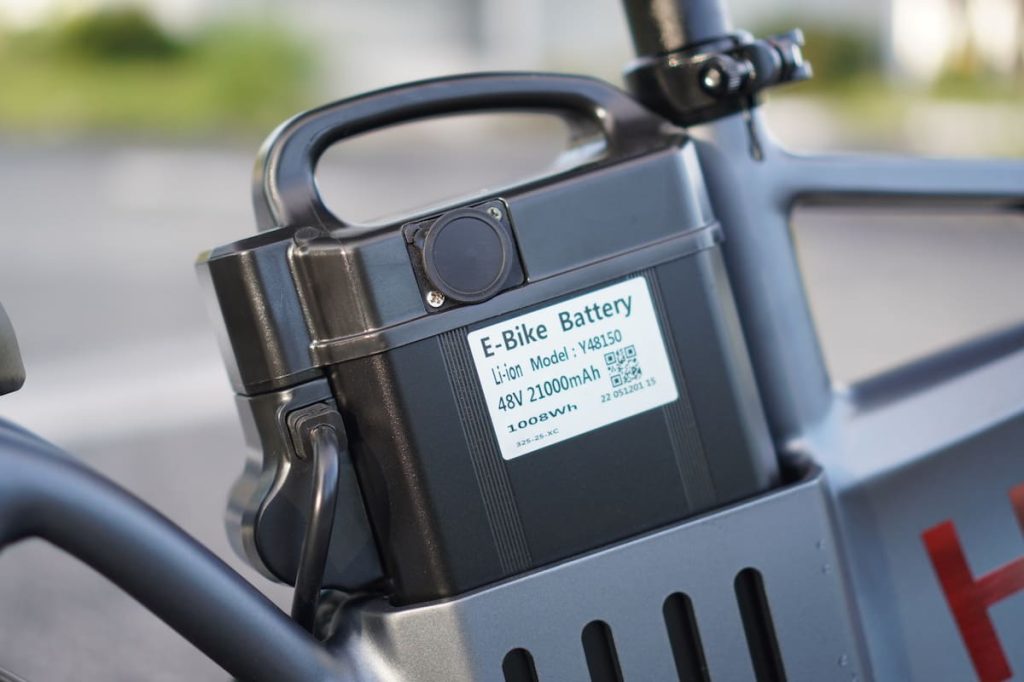
As electric bicycles continue to grow in popularity, one question often arises among potential buyers and intrigued newcomers: How much does it actually cost to charge an electric bicycle? The idea of an eco-friendly, efficient mode of transportation sounds enticing, but is that going to mean a jump in your electric bill?
The short answer is this: Electric bikes are surprisingly inexpensive to charge. Let’s break down the truth about the cost of charging e-bikes and see why they might be one of the most cost-effective transportation options available today.
The reason most people think charging an e-bike will be expensive comes down to two factors: 1) Most people don’t realize how energy-efficient e-bikes are, and 2) Most people don’t realize how cheap electricity is in the US.
On the first point, most e-bikes have a motor of 750 watts or less, which means they’re working with at most one horsepower. In Europe, where e-bike power levels are limited to a mere 250 watts, that’s a third of a horsepower.
The reason you still see e-bikes zipping by so quickly is that you simply don’t need very much power to move a 50 lb vehicle and a single person. Consider that a reasonably healthy human rider usually produces around 200-250 watts of power with their legs. And so when you don’t need much power, you don’t need much electricity.
On the second point, electricity isn’t really that expensive. When you feel the pain of a monthly electrical bill, it’s usually due to energy-hungry appliances like air conditioners. There’s a decent chance that a month of charging an e-bike will use less energy than a single day of running your home air conditioning. Let’s see why, below.

Breaking down the cost of charging an electric bicycle
The cost to charge an electric bicycle primarily depends on the capacity of the battery and the local cost of electricity. Most e-bike batteries have capacities ranging from 250 watt-hours (Wh) to 750 watt-hours (Wh). To put this into perspective, let’s consider a typical 500Wh battery, which is common in many mid-range e-bikes. For those in the know, this would be quite similar to a conventional 48V 10Ah battery found in many e-bikes.
Calculating electricity consumption:
A 500Wh battery means it uses 0.5 kilowatt-hours (kWh) of electricity to fully charge (since 1 kilowatt-hour = 1,000 watt-hours). This doesn’t include inefficiencies in the charger, but we’ll address that in a moment.
Understanding local electricity rates:
Electricity rates vary widely depending on location, but in the United States, the average cost is about $0.16 per kWh. If you’re in Nebraska or California, you’re probably paying a lot less or a lot more, respectively. But that’s a rough average depending on who you ask and how you calculate it.
Calculating the charging cost:
To charge a 500Wh battery (0.5 kWh), you would multiply the battery capacity by the cost per kWh:
0.5 kWh × $0.16 per kWh = $0.08
So, it costs around 8 cents to fully charge a 500Wh e-bike battery, on average.
Assuming a range of roughly 30 miles would result in a cost per mile of 0.2 cents per mile, or one penny per every five miles of riding. If you live a couple of miles from work, your daily commute would cost a single penny.
Your weekly or monthly “fuel costs” for an e-bike will of course depend on how much you ride and how much range your e-bike gets per charge. For example, if you only ride 10-20 miles each weekend and your e-bike gets around 30 miles per charge, you’ll likely spend around sixteen cents per month on electricity.
On the other hand, if you ride 10 miles to work and back on the same bike, five times a week, then your monthly electricity cost would be closer to sixty cents.
Basically, most people are going to struggle to spend more than a dollar on electricity per month to charge their bike, unless they’re riding long distances every day. In other words, electricity costs associated with charging an e-bike are so close to zero that most people could probably consider them “free”, for all intents and purposes.
A note on (in)efficiency:
If you want to be more exact, you should consider things like inefficiencies. For example, the wall charger used to fill a 500 Wh battery from empty to full is likely not doing better than 90% efficiency, meaning 1 out of every 10 watts pumped through is lost as heat in the conversion.
So we could be more accurate by assuming a roughly 10% inefficiency rate. But as we saw above, 10% more than nearly zero is still nearly zero.

Comparing costs of e-bike charging versus alternative transportation
To truly understand the cost-effectiveness of e-bikes, let’s compare the cost of charging an e-bike to the cost of fueling a gasoline-powered car or even using public transportation.
Remember, a rather efficient e-bike is likely to cost around 0.2 cents per mile, while a rather inefficient e-bike might cost closer to 0.5 cents per mile.
Fueling an internal combustion car:
The average cost of gasoline in the U.S. right now is around $3.50 per gallon. Even a highly efficient car that gets 30 miles per gallon would cost about 12 cents per mile, not including maintenance and other expenses. That’s around 40x the cost of charging an e-bike.
Charging an electric car:
With the average cost of electricity at around $0.16 kWh in the US, filling an average-sized 60 kWh would cost around $9.60. If we assume a range of roughly 250 miles per charge from that electric car, that works out to a per mile electricity cost of around 4 cents. That’s around 13x the cost of charging an e-bike.
Public transportation:
A single bus or subway ride can range from $2 to $3 in many cities, significantly more than the cost of an e-bike charge. These numbers will vary from city to city, and the per mile number varies even more wildly as some people take a bus for a mile or two while others ride a train for dozens of miles. But suffice it to say, it can be an order of magnitude or two higher than the per mile cost of an e-bike.

Additional savings
Beyond the cost of electricity, e-bike owners can also save on other expenses:
- Maintenance: E-bikes have fewer moving parts than cars and typically require less maintenance. There’s no need for oil changes, and brake pads and tires generally last longer due to the lower speeds and lighter weight. I got my wife an e-bike last year and she has been riding to work every day since. In the past year, our only maintenance expense has buying a new $50 front wheel, and that’s only because she got unlucky and managed to damage hers. She’s still on her same tires and brake pads, 650 miles later.
- Parking: Many cities charge high fees for parking cars, whereas parking an e-bike is often free and more convenient. A few months of parking fees in a big city can pay for the entire cost of buying a new e-bike.
- Insurance: Most e-bike riders in the US do not insure their e-bikes. Among e-bike owners who do choose to insure their bikes, the cost is generally significantly lower than car insurance.

Environmental impact
In addition to being cost-effective, e-bikes are also an environmentally friendly transportation option. Charging an e-bike has a much lower carbon footprint compared to fueling a car with gasoline. As more electricity is generated from renewable sources, the environmental benefits of e-bikes will only increase.
I built a charging shed for my e-bikes and other e-vehicles, and it uses a set of solar panels combined with portable power stations to charge all of my rides from solar power. It’s not the cheapest way to do it, but it’s off-grid and convenient. I even keep my electric tractor in there, which is nice since the shed is far away from any electrical outlet (hence the need for off-grid electricity).
Charging an electric bicycle is remarkably inexpensive, often costing just a few cents for a full charge. When compared to the costs associated with cars and public transportation, e-bikes emerge as a highly economical and sustainable mode of transport. Whether you’re commuting to work, running errands, or simply enjoying a ride, the low cost of charging an e-bike makes it an attractive option for anyone looking to save money and reduce their environmental impact.
So, next time you’re considering a new mode of transportation, remember the truth about how much it costs to charge an electric bicycle—you might just find it to be the perfect solution for your needs.

A final note on units: I’m sorry that this is mostly written using imperial units. I don’t live in North America, nor do I use imperial units daily, but that’s where Electrek is headquartered, and so here we are.
